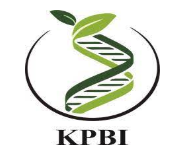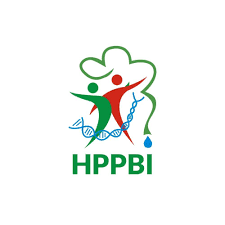PROFIL DISPOSISI BERPIKIR KRITIS MAHASISWA PENDIDIKAN BIOLOGI DI PERGURUAN TINGGI
DOI:
https://doi.org/10.15575/bioeduin.v9i1.4341Keywords:
Profile, Critical Thinking Disposition, BiologyAbstract
Critical thinking disposition is an important component in determining a person's critical thinking abilities. This study aims to see a comparison of the score critical thinking disposition of biology education students at University of Muhammadiyah  Bengkulu which was involving 73 students taken from 38 (52.05%) of Biology Education students in the 1st year and 35 (47.95%) are students in the 2nd year. The instrument used in this study is a Critical Thinking Disposition Test in Biology consisting of 10 questions for each indicator of critical thinking disposition. The results indicate that profile of critical thinking disposition in Biology Education students in the 2nd year is higher than students in 1st year. Profile of critical thinking disposition of Biology Education students in the 2nd year is dominated in the medium category for indicators of  truth-seeking, systematicity, self-confidence, inquisitiveness, and maturity. And on the indicators of open-mind and analyticity are shows as high profile of disposition. While profile of critical thinking disposition disposition in Biology Education students in the 1st year is dominated in the low category, namely on the indicators of truth-seeking, analyticity, systematicity, inquisitiveness, and maturity. Only on the indicators of open-mind which is interpreted as a high profile of critical thinking disposition and in medium category for self confidence
References
Agustanti, T. H. (2012). Implementasi Metode Inquiry Untuk Meningkatkan Hasil Belajar Biologi. Jurnal Pendidikan IPA Indonesia, 1, 16-20
Ahlam, S.R., and Hala, G. (2014). Impact of Problem-Based Learning on Students`Critical Thinking Dispositions, Knowledge Acquisition and Retention. Journal of Education and Practice, 5, 74-85.
Ana, M.N. (2012). A Study of the Internal Structure of Critical Thinking Dispositions. Spring, 27, 31-38
Bok, D. (2006). Our Underachieving Colleges: A Candid Look At How Much College Students Learn And Why They Should Be Learning More Princeton, NJ: Princeton University Press.
Busari, A.O. (2011). The Relationship Between Self-Eeficacy, Motivation And Critical Thinking Disposition To Achievement Of Sandwich Degree Students. International Journal of Asian Social Science, 1, 1-9.
Ennis, R. H, Millman J. & Tomko, T.N. (2005), " The Cornell Critical Thinking Tests, Level X and Z", (5thed. revised), Pacific Grove, CA: Midwest Publications.
Facione, P.A., Giancarlo and Joanne, G. (1995). The disposition toward critical thinking. Journal of General Education, 44, 1-25.
Facione, P. A. (2000) The disposition toward critical thinking: its character, measurement, and relation to critical thinking skill Informal Logic, 20, 61-84.
Facione, P. A., Norren, C.F., and Carrol, A. (2000). The Disposition Toward Critical Thinking: Its Character, Measurement, and Relationship to Critical Thinking Skill. Informal Logic, 20, 61-84.
Facione, P. and Carrol, A. (2013). Think Critically: Skilled and eager to think. Prentice Hall, Pearson Education, inc.
Facione, P.A. (2011). Critical Thinking: What It Is and Why It Counts. Measured Reasons and The California Academic Press, Millbrae, CA
Foluso, O. (2014). Critical thinking dispositions of nursing faculty in Southwestern Nigeria International Journal of Research in Applied. Natural and Social Sciences (IMPACT:IJRANSS), 2, 127-134.
Foluso, O., and Caserina T (2014). Assessment of critical thinking dispositions of nursing students in Southwestern Nigeria. International Journal of Research in Applied, Natural and Social Sciences (IMPACT:IJRANSS), 2, 7-16.
Ku, K. Y. (2009). Assessing students’ critical thinking performance: Urging for measurements using multi-respon format. Thinking skills and Creativity, I4, 70-76.
Sugianto, R. (2017). Praktek Lapangan Untuk Meningkatkan Kemampuan Mengemukakan Pendapat Mahasiswa. Jurusan Geografi FIS – UNNES, 6, 80-90.
Temel, S. (2014). The effects of problem-based learning on pre-service teachers’critical thinking dispositions and perceptions of problem-solving ability. South African Journal of Education, 34, 1-20.
West, R. F., Toplak, M. E., & Stanovich, K. E. (2008). Heuristics and Biases as Measures of Critical Thinki Associations with Cognitive Ability and Thinking Dispositions. Journal of Educational Psychology, 100, 930-941.
Xiang, Y.D., Jeppe, E., Egon, T., and Baozhi, S. (2013). PBL and critical thinking disposition in Chinese medical students – A randomized cross-sectional study. Journal of Problem Based Learning in Higher Education, 1, 72-83.
Yuksel, G. and Alci, B. (2012). Self Efficacy and critical thinking dispositions as predictors of success in school practicum International Online Journal of Education Sciences (IOJES), 4, 81-90.
Downloads
Published
How to Cite
Issue
Section
Citation Check
License
Authors who publish in Jurnal BIOEDUIN agree to the following terms:
- Authors retain copyright and grant the journal right of first publication with the work simultaneously licensed under a Attribution-ShareAlike 4.0 International (CC BY-SA 4.0) License that allows others to share the work with an acknowledgment of the work's authorship and initial publication in this journal.
- Authors are able to enter into separate, additional contractual arrangements for the non-exclusive distribution of the journal's published version of the work (e.g., post it to an institutional repository or publish it in a book), with an acknowledgment of its initial publication in this journal.
- Authors are permitted and encouraged to post their work online (e.g., in institutional repositories or on their website) prior to and during the submission process, as it can lead to productive exchanges, as well as earlier and greater citation of published work (See The Effect of Open Access).








